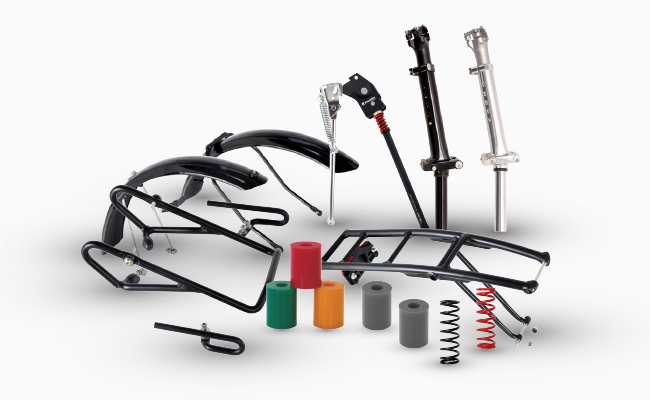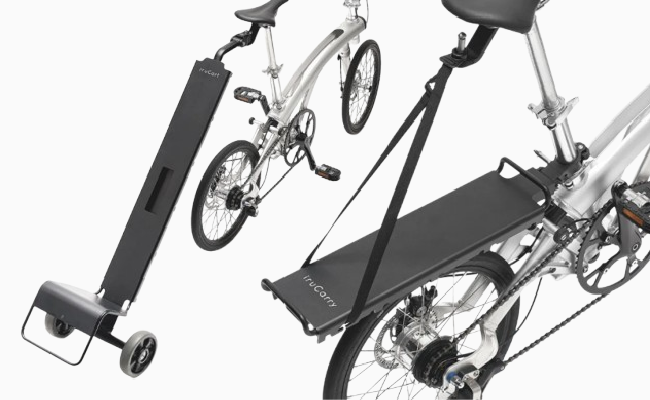
How to keep yourself and your e-scooter safe in the rain

The food delivery business has been booming as of late due to the fact that many Singaporeans feel that they are too busy and have no time to cook once they get home from their jobs. Food delivery has changed our meal times drastically, allowing us to order a nice hot meal straight off an app and have it delivered straight to our doorstep.
With more and more people relying on food delivery apps to cater their daily meals, the demand for riders to deliver food has grown exponentially as well. Being a food delivery rider is a popular occupation in Singapore these days, largely because of the flexible nature of the job and the incentives these companies offer. You can decide when and where you want to work, and even choose what kind of delivery orders you want to take up.
Many food delivery riders have started to use e-scooters and e-bikes to get their deliveries done. They are much cheaper and (in some cases) more efficient than any car or motorbike, so they are seen as the best choice for food delivery work.
One of the biggest concerns for food delivery riders who use e-scooters and e-bikes is that they are much more exposed to the elements than a delivery rider who uses a car. Rain is the biggest problem for these riders as it hinders their visibility and their damages their e-scooter if exposed to too much rainwater.
Most manufacturers recommend avoiding wet or damp conditions whenever possible. They have seen that riders are more likely to get in accidents when driving in the rain as they are rushing to get to a shelter to stay dry or are unable to see clearly due to the downpour.
It’s also not good for the e-scooters as well. Moisture can be a big problem because it can damage both the scooter’s external and internal parts. Moisture that reaches the internal system or battery can cause rusting and electrical damage.
Alot of e-scooter riders do try to heed to these warnings. But if you’re a food delivery rider, you might not have the luxury of just stopping by the side and letting the rain pass.
If you’re looking to ride in the rain, here are some tips you can follow.
Make sure your battery is covered
Most e-scooters and e-bikes are designed to resist rain damage to a certain degree. But you still risk the chance of getting your battery damaged by rain water when you are out delivering food in the rain.
One way to keep your battery safe in the rain is to cover it. You can use a simple plastic sheet or even your raincoat. It’s not the most effective way to do so though. Most e-scooter and e-bike companies would much prefer if you use a waterproof rain guard instead.
To avoid damage when your e-scooter is not in use, be sure to cover it if you leave it outside. We recommend a waterproof cover that can protect it from rain and moisture. Make sure the cover is made from a sturdy, waterproof material and that it has the ability to speed up the evaporation process.
Make sure your e-scooter has a water-resistance certification.
Most newer e-scooters do have this certification but it is best to make sure that the one you are buying comes with it. One of the certifications you should be looking out for is the IP54 certification. A e-scooter that has this certification, such as the Segway-Ninebot ES2, will be able to operate in dusty conditions and, more importantly, be resistant to water splashing onto it. This allows you to ride your e-scooter through the rain for a short amount of time without worry of your battery being damaged.
The other certification you can look out for is the IPX7 certification. A e-scooter that is IPX7 certified, like the new Segway-Ninebot MAX, can be immersed in water for a maximum of 30 minutes at a depth between 15cm to 1m. This means that you can drive through heavy rain and rain puddles without worry of your battery getting water damage.
Find shelter immediately
This is the first thing you should do when it starts to rain while you’re out on your delivery rides. Find the nearest shelter, be it under an overhead bridge, under a void deck or in an MRT station. Riding in the rain is dangerous for both you, your scooter and pedestrians around you. This is the first thing you should do when it starts to rain while you’re out on your delivery rides. Find the nearest shelter, be it under an overhead bridge, under a void deck or in an MRT station. Riding in the rain is dangerous for both you, your scooter and pedestrians around you.
Drive slower
 This is the most important one out of the lot. LTA has ruled that all e-scooters must be UL2272 certified as well as adhere to a specific set of specifications, such as being capped at a speed of 25km/h, not having a handlebar over the length of 70cm and not weighing over 20kg. 25km/h might seem rather slow but in reality a crash at that speed is enough to seriously injure or even kill a person. And during a downpour, the severity of such a crash is increased. Therefore it is best to not go at full speed during a downpour.
This is the most important one out of the lot. LTA has ruled that all e-scooters must be UL2272 certified as well as adhere to a specific set of specifications, such as being capped at a speed of 25km/h, not having a handlebar over the length of 70cm and not weighing over 20kg. 25km/h might seem rather slow but in reality a crash at that speed is enough to seriously injure or even kill a person. And during a downpour, the severity of such a crash is increased. Therefore it is best to not go at full speed during a downpour.
Most new scooters have three preset driving modes at capped at varying speeds. One such scooter is the Segway-Ninebot MAX. It has three speed modes - ECO which is locked to a maximum speed of 10km/h, Drive which has a range between 10 to 20km/h, and finally Sport, which get your MAX to 25km/h. In the event that a rider is caught in the rain while driving the MAX he can change the settings to Eco mode with a press of a button, and quickly find shelter. His chances of getting into an accident will be much slimmer riding at a much slower and safer speed.
So those were some tips for you to keep yourself and your e-scooter safe when out in the rain. The safest option of course is to not go out into the rain with your e-scooter. Your life is far more important than a few dollars from a successful delivery! Stay safe and ride safe.






